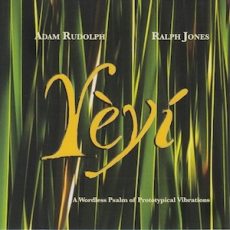
Daily Dose Of Jazz…
Adam Rudolph was born September 12, 1955 in Chicago, Illinois and grew up on the South Side among jazz and blues musicians. In 1988 he met Yusef Lateef, and the two would collaborate and perform together for the next 25 years.
In 1992 Rudolph helped found the band Adam Rudolph’s Moving Pictures, a group of improvisers He has been the artistic director of and composer for Hu: Vibrational with Hamid Drake, Vashti International Percussion Ensemble and Go: Organic Orchestra. He has performed as half of the Wildflowers Duo with Butoh dance innovator Oguri.
Rudolph has released several albums as leader and has also recorded with musicians Sam Rivers, Omar Sosa, Wadada Leo Smith, Pharoah Sanders, Bill Laswell, Herbie Hancock, Foday Musa Suso, and Shadowfax
Composer and percussionist Adam Rudolph continues performing in the post-bop and world fusion medium.
More Posts: bandleader,history,instrumental,jazz,music,percussion
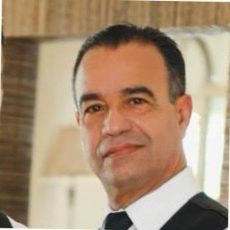
Daily Dose Of Jazz…
Carlos Salazar was born on September 11, 1955 in Havana, Cuba. Raised there he discovered his love and passion for percussion at a very young age. It wasn’t long before his curiousity led him to great opportunities, studying music at the National School of the Arts (ENA) in Havana. He learned the basics and principles of percussion while at the same time acquiring an additional degree in electronics from the University of Havana.
His love of percussion shifted to conga drumming, a key instrument in the Afro-Cuban street scene. Carlos then learned the discipline of the musical language and rythym of percussion through African teachers, teachers of the streets, considered the fathers of Latin percussion.
His musical style consists of a contemporary jazz flavor, making music interesting to play. After leaving Cuba in 1980 he has toured throughout the U.S. and has remained active within the musical scene in South Florida.
Percussionist Carlos Salazar who has not recorded and devotes himself entirely to his music and Afro-Cuban roots, spends his days content with the valued fact that he still has two hands to make music with.
More Posts: bandleader,history,instrumental,jazz,music,percussion
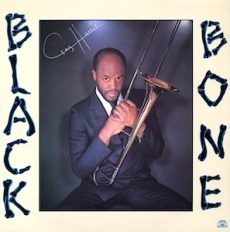
Daily Dose Of Jazz…
Craig S. Harris was born September 10, 1953 in Hempstead, New York. He graduated from the music program at State University of New York at Old Westbury and was influenced by its founder and director Makanda Ken McIntyre. He moved to New York City in 1978 established him with trombonists Ray Anderson, Joseph Bowie, and George E. Lewis.
He first played alongside another of his teachers at SUNY, baritone saxophonist Pat Patrick, in the Sun Ra Arkestra for two years. Harris then embarked on a world tour in 1979 with South African pianist Abdullah Ibrahim, formerly known as Dollar Brand. While on tour in Australia, he discovered the indigenous Australian wind instrument the didgeridoo, and added it to the collection of instruments he plays.
Craig subsequently performed with progressive musicians David Murray, Beaver Harris, Don Pullen, Sam Rivers, Lester Bowie, Cecil Taylor, Muhal Richard Abrams, Charlie Haden and many others, He also played in Lena Horne’s Broadway orchestra for a year. Along with Mark Isham composed the soundtrack for the 2021 film Judas and the Black Messiah.
He led his own ensembles, performed internationally and has recorded several albums. As leader, Harris. For the latter, he recorded with two groups. The Tailgater’s Tales was a quintet with clarinetist Don Byron, trumpeter Eddie Allen, Anthony Cox on double bass, and Pheeroan akLaff on drums. Harris’s large ensemble Cold Sweat was a tribute to the music of James Brown.
Trombonist Craig Harris, who has recorded since 1983 for India Navigation, Soul Note and JMT, continues to pursue his career.
More Posts: bandleader,history,instrumental,jazz,music,trombone
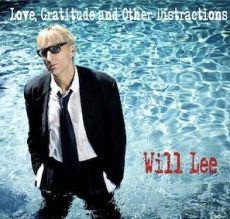
Daily Dose Of Jazz…
Will Lee was born September 8, 1952 in San Antonio, Texas. Greatly influenced to pursue music because of his parents, his father played piano, trumpet and the upright bass professionally and his mother sang with big bands. He took up drums after seeing the Beatles on The Ed Sullivan Show, and by the time he was 12 had formed his first band in Miami, Florida.
Due to the great numbers of drummers in Miami, Lee studied French horn for a year before shifting to bass and studying at the University of Miami. He became part of a succession of bands including top 40 bands with names like Chances R, The Loving Kind, Green Cloud and Goldrush.
A move to New York City saw Will selected by trumpeter Randy Brecker to join the jazz-rock group Dreams. He played on the album Imagine My Surprise as a bassist and vocalist. After Dreams disbanded, his career as a session musician flourished, and he toured with many artists. In 1982,he became one of the original members of The World’s Most Dangerous Band, the house band on NBC‘s Late Night with David Letterman.
Bassist Will Lee, who has played in both the jazz, rock and r&b genres, continues his career as a seesion and touring musician and recording artist.
More Posts: bandleader,bass,history,instrumental,jazz,music
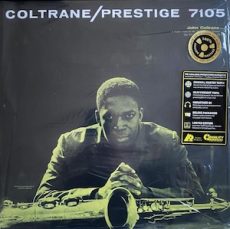
Requisites
Coltrane ~ John Coltrane | By Eddie Carter
As someone who has enjoyed John Coltrane’s music for years, I’ve revisited this morning’s album from the library countless times, and each time I listen, it reveals something fresh and exciting. Coltrane (Prestige PRLP 7105) is the first chapter in a body of work that continues to challenge, inspire, and uplift listeners. John Coltrane’s path to his debut album was anything but easy. He grappled with addiction and periods of self-doubt, which eventually led to his dismissal from Miles Davis’s quintet. After returning to Philadelphia to end his addiction, John overcame his dependencies and embarked on a profound spiritual journey, allowing him to discover his singular musical voice and ultimately his first Prestige recording session.
Joining the tenor saxophonist are Johnnie Splawn on trumpet (tracks: A1, B1 to B3), Sahib Shihab on baritone sax (A1, B1, B3), Red Garland (A1 to A3), and Mal Waldron (B1 to B3) on piano, Paul Chambers on bass, and Albert “Tootie” Heath on drums. My copy of this album is the 2023 Analogue Productions mono audiophile reissue, sharing the original catalog number. “Bakai” by Cal Massey opens the first side, unveiling the ensemble’s relaxing melody. Red initiates the solos with a gentle and lyrical touch, as smooth as a calm sea. John’s following statement is grounded in a steady, unwavering rhythm of harmonic exploration. Sahib then steps in with an exquisite statement that nearly steals the show, leading back to the sextet’s theme restatement and ending.
Violets For Your Furs is a charming ballad from the 1940s by Tom Adair and Matt Dennis, which Red brings to life with a tender introduction to Coltrane’s lyrical sensitivity in the quartet’s theme, and a softer, more romantic side in the opening solo. Garland comes in next for a thoughtful, reflective reading until Coltrane gracefully reenters for the theme’s elegant climax. “Time Was” by Gabriel Luna de la Fuente, Paz Miguel Prado, and Bob Russell moves the beat upward for the quartet to give a lively melody. John leads off the solos with an abundance of passion, then Red continues soaring with joyful exuberance in the second reading. Paul has the last word and takes a short walk ahead of the theme’s return and finish.
Straight Street by John Coltrane gets the second side off to a good start. This song announces the spiritual dimension that would become central to his later albums. The sextet returns to full voice for a swinging melody with Mal taking over the piano duties. Coltrane gets right to work and wails on the opening statement. Splawn steps in next, firing on all cylinders, then Waldron takes the final spotlight preceding the group’s return for a vivacious exit. The pace slows down again for the album’s second 1940s ballad, “While My Lady Sleeps,” by Gus Kahn and Bronislaw Kaper. The ensemble presents a splendid study in soulful improvisation, with John paving the way through the melody into an affectionately intimate reading that ends as beautiful as it began.
Chronic Blues by John Coltrane opens with the sextet easing into the theme at a laid-back, comfortable tempo. Shihab launches the opening solo with rhythmic grace and effortless flow. Coltrane next delivers a smooth and inviting swing, as warm and familiar as a favorite homemade dish. Splawn’s turn brings a light and airy touch, infusing the piece with an appealing charm. Waldron closes things out with a breezy reading that leaves the sextet’s finale deeply satisfying. Bob Weinstock supervised the initial session, and Rudy Van Gelder was behind the recording dials. Kevin Gray mastered this audiophile reissue at Cohearant Audio. The album’s sound quality is spectacular, with a gorgeous soundstage that places the musicians directly in front of your sweet spot.
The record was pressed on 180-gram audiophile vinyl and offers an absolutely silent background until the music unfolds. Upon its release, “Coltrane” was met with excitement from jazz lovers and critics alike, though it didn’t propel John Coltrane to instant fame. That recognition would eventually arrive with “Giant Steps,” “My Favorite Things,” and “A Love Supreme.” Still, his debut firmly established Coltrane as a bandleader, composer, and innovator. It also marked the beginning of an extraordinary journey, where he would push the boundaries of jazz, explore spiritual themes, and redefine musical expression. If you haven’t experienced “Coltrane” yet, I highly recommend searching for it on your next record store visit. It’s an outstanding album by John Coltrane that provides a calming, immersive listening experience, gently enveloping you in its soothing melodies from the very first note!
A Love Supreme (Impulse A-77/AS-77), Giant Steps (Atlantic 1311/SD 1311), My Favorite Things (Atlantic 1361/SD
1361) – Source: Discogs.com Violets For Your Furs, While My Lady Sleeps – Source: Wikipedia.org © 2025 by Edward Thomas CarterMore Posts: choice,classic,collectible,collector,history,instrumental,jazz,music,saxophone



